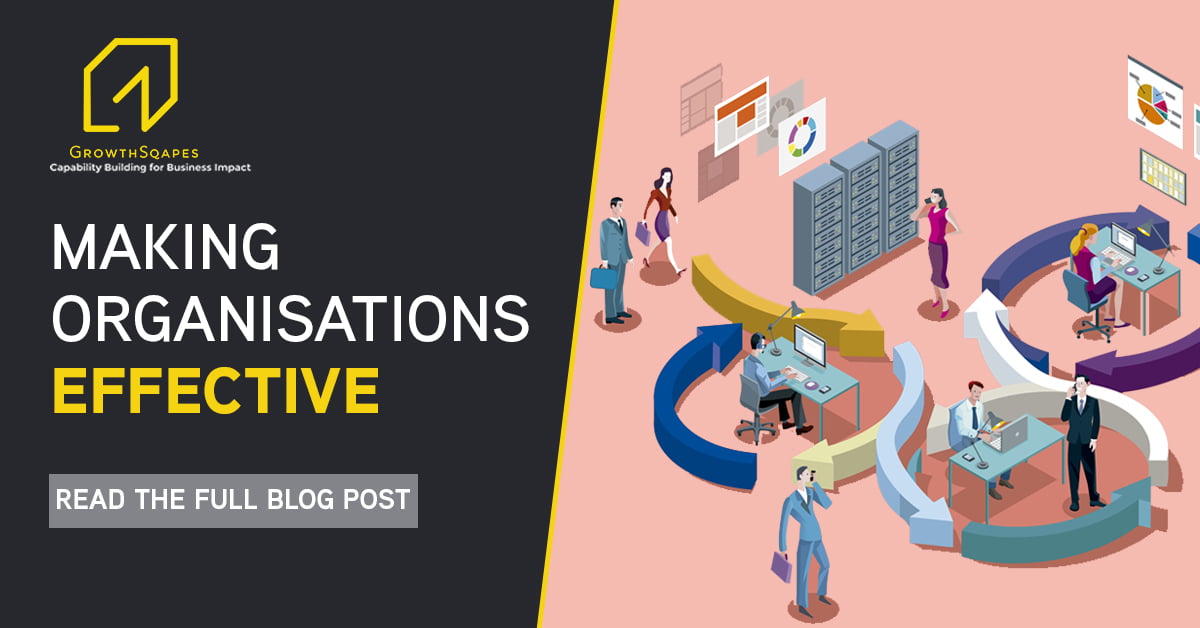What makes organizations effective? Organizational effectiveness is about achieving results. Capabilities are central to an organization’s ability to achieve results. It’s the people who drive the results. Whereas Mission, Vision, and Strategies are identified and formulated to map what the organization should do, it’s the people with their knowledge, skills, attitudes, put through the processes within the organizations’ boundaries, authorities, roles, tasks, their energies and resources that make the recipe for the results.
Great strategies necessarily do not give great results. For people to translate great strategies into unique results, they need unique capabilities.
Given the shifts in the business weather-patterns across the globe, the capabilities that business organizations need the most have evolved. It is still a debate if the manner and means of developing those capabilities have advanced at the same pace. Surveys on this, indicate that the most effective business organizations devote their energies and efforts on building such skills and competencies that help them to sustain their business. These organizations link their learning interventions to business vectors and track business performance.
For example, a firm we were engaged with had formulated a strategy to radically increase their business, by making their company a process-centric organization. Focusing on the key value-adding activities which summed up to the major processes and moving away from the traditional operational structure identified by departments. The strategy sounded great inside the board room, but on the ground it hit hurdles. The new approach that the strategy recommended required numerous capabilities that were new to the people: people had to learn to work in a matrix organization reporting to different bosses for different responsibilities.
Several islands needed to merge, with a heavy exchange of information, collaborative-influence became a pre-requisite as a competency for many managers who were until now only commanding their own ships. These new capability requirements demanded that the majority of people in the company changed the way they worked at least in some way. The strategy did talk about “change” but it was silent about the need to develop the capabilities that would facilitate the change.
Thus, recommending change and embarking upon organizational change, is not only unmanageable but also unachievable without building capabilities. Commonplace data show that today most companies indulge in some level of learning and development to build the skills and competencies of the people. Credible research shows that organizational bosses voice significant challenges about their own capability-building programs. The biggest being the ability to link the learning and development programs to business-vectors to arrive at some matrix to assess the impact of the learning interventions on the business.
On the positive contrary, there are companies who have seen the needle move. These companies experience that sustained capability building by linking learning and development interventions to business-vectors helps them track business performance. These are organizations that have evolved from being impromptu in their training and development approaches to a systemic sustained and scientific approach to capability building.
This is an approach wherein the company looks at its strategy through the lenses of the capabilities required to execute the strategy and achieve the result. It begins with a systemic approach to diagnosing the parts of the system to arrive at the capability gap of the whole system. This ensures that strengths are not concentrated in a few parts warranting a misbalanced organization. That’s what systemic sustained and scientific approach to capability building is, which produces a tangible positive business impact.
GrowthSqapes, through its various capability development interventions, help organizations achieve effectiveness.
This blog has been written by Satyakki Bhattacharjee, Managing Partner at GrowthSqapes.

